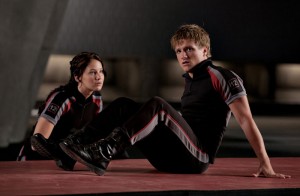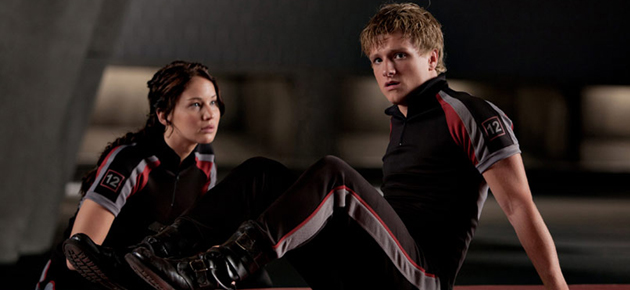
If you’ve been anywhere near a bookstore or a teenager in the past couple of months, you’ve probably heard of The Hunger Games. The young adult books have become a phenomenon among teens and adults alike, and now, with the movie adaptation of the first book, the series has the opportunity to reach an even wider audience. But is it a compelling enough adaptation to win the series a new legion of fans?
One gets the impression that a large part of the appeal of The Hunger Games comes from its premise. It follows the life of 16-year-old Katniss Everdeen (played by Jennifer Lawrence), who lives in a dystopic society called Panem. In Panem, there are 12 impoverished districts, all of which are controlled by the powerful, opulent citizens of the Capitol. After a failed uprising by all 12 districts years ago, the Capitol enforced a tradition called the Hunger Games. Each year, each district must send a “tribute” of a teenage boy and girl to the Hunger Games arena, where they must fight to the death while all of Panem watches on television. Only one survives.
When Katniss’s younger sister, Prim, is selected as the District 12 female competitor, Katniss volunteers to take her place. Her fellow District 12 tribute is Peeta Mellark (Josh Hutcherson), and for the two of them, their best chance of survival comes in the wobbly, drunken form of Haymitch (Woody Harrelson), a previous District 12 victor who becomes their mentor. Training and media attention can only last for so long, though, and soon Katniss and Peeta find themselves in the vicious world of the Hunger Games, where they must battle 22 other children (and, unavoidably, each other) for the chance to survive and see their families again.
One of the major strengths of The Hunger Games as a movie is its visual tone. Director Gary Ross captures the suffering of the district citizens in just a few shots at the beginning of the film. He also provides some truly creepy dystopic imagery. The high-tech aircrafts and television crews of the Capitol slowly infiltrate the quiet District 12 when it comes time to select their Hunger Games competitors, and their presence is very unsettling.
For a blockbuster movie about children fighting each other to the death, The Hunger Games is surprisingly low-key. Ross doesn’t take a sensationalizing approach, and I think it works to his advantage. The killings in the arena come fast and with relatively little fuss, and, in a strange way, that gives them more impact. There are a few moments of high action as Katniss battles the elements and her competitors, but Ross knows when to use them, and when to hold back.
The Hunger Games also has a huge advantage with Jennifer Lawrence in the leading role. Lawrence not only has the physicality to play Katniss, but she also perfectly conveys all of the varied emotions that Katniss experiences. Lawrence was nominated for an Academy Award for her performance in the 2010 indie drama Winter’s Bone, and here she proves that she can bring that same vulnerability and understated charisma to a much larger role.
Harrelson is also brilliant as Haymitch. He deftly balances comic relief moments with unconventional warmth, and Haymitch’s relationship with Katniss becomes one of the most interesting interactions in the movie. Harrelson is an expert at going big without going over-the-top, and here he turns a small role into something memorable.
However, this is a very long movie. It’s nearly two and a half hours long, and it feels like it. It takes at least an hour for the actual Hunger Games to begin, and while the pre-Games setup is interesting in its own right and helps establish the characters, it really does go on for a long time. The film begins to drag around the 45-minute mark, and it doesn’t pick back up until Katniss steps into the Hunger Games arena.
There is a lot of plot to fit into the movie, and the pacing in some parts feels off. Certain key moments are abrupt and rushed, which sometimes loses the movie some of the urgency the book had. Unfortunately, the climax of the film is one of these moments; the movie quickly wraps up in a slightly bewildering way. It sets the stage for the second movie in the trilogy, but it doesn’t really feel like a satisfying conclusion to the first one. Some films do manage to do both.
The Hunger Games has undeniably exciting action scenes, and it’s an impressive feat as a visual spectacle. It would have been nice to see more development in the supporting characters and a shorter runtime, but on the whole, both teens and adults can enjoy the movie. Future teen franchise flicks should take note.
MMM½



